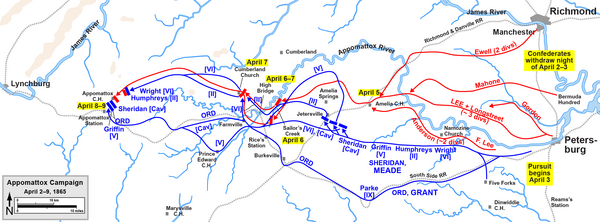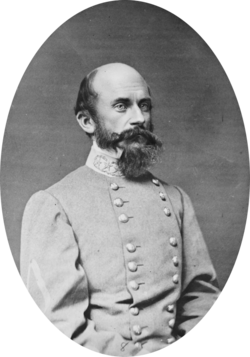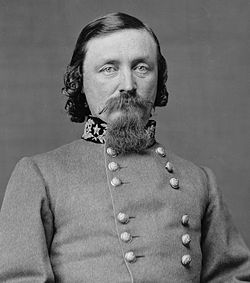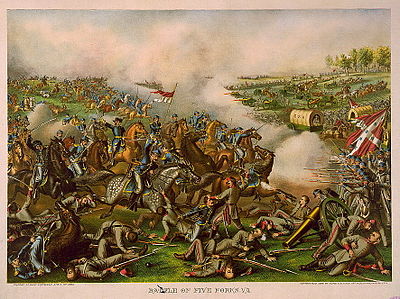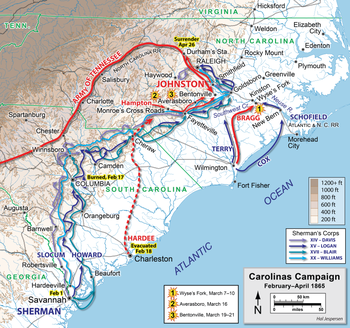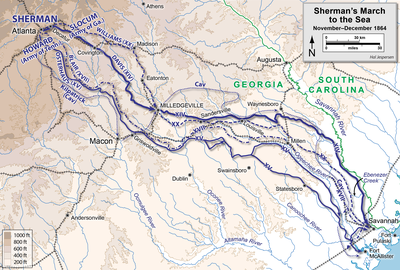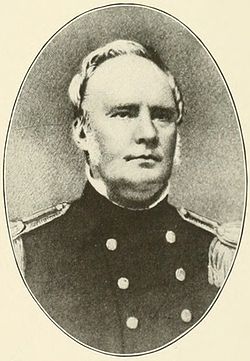 |
| The reconstructed McClean House, where the negotiations took place |
With his army out of supplies and hemmed in by the Federals on every side, Robert E. Lee realized that it was hopeless to continue to resist the Federals. He therefore, with the agreement of most of his officers, wrote to Ulysses S. Grant to ask for terms. As he rode off to meet Grant, Longstreet shouted after him, “General, if he does not give us good terms, come back and let us fight it out!” Grand and Lee met at the house of Wilmer McLean. McLean had lived on the battlefield of Manassas, one of the war's first battles, and had moved to Appomattox to escape the fighting. Now it could be said that the war began in his backyard and ended in his parlor.
Lee arrived at the house first, wearing an exquisite uniform. When Grant appeared he wore a old uniform covered in mud from riding, with little significance of rank. He had not had the opportunity to change before the conference. The two men had met during the Mexican-American War, and Grant mentioned it briefly before Lee brought the meeting onto topic. Grant offered him the same terms as he had a few days earlier, when he suggested that Lee surrender. They were that all the Confederate officers and men be paroled and sent home, not to fight again without being exchanged. Their supplies and weapons would be turned over to the Federals, excepting only the officers' sidearms and the horses that men had brought with them to the war. These were good terms, far better than the unconditional surrender that Grant was famous for offering on other occasions, and Lee happily accepted. Grant wrote of the meeting:
I said to Lee that I hoped and believed this would be the close of the war; that it was most important that the men should go home and go to work, and the government would not throw any obstacles in the way. Lee answered that it would have a most happy effect, and accepted the terms.
As Grant and Lee rode away some Federal soldiers began too cheer at their victory, but Grant forbade it. “The Confederates were now our countrymen,” he wrote, “and we did not want to exult over their downfall.” Word spread quickly of the agreement, and before long the McLean House was ransacked by soldiers hoping for a souvenir from the momentous occasion. The armies intermingled, adversaries talking, and old friends from the Mexican War meeting again, and reminiscing about old times.
 |
| The parlor in which the generals met |
28,000 Confederates surrendered at Appomattox, a sad remnant of the once great Army of Northern Virginia. Although many thousands of Confederates remained in arms, in armies across the south, Lee's surrender was the deathnell of the Confederacy. Their greatest general and army had fallen, and most in the south saw the war would soon be over.
 |
| Union troops in front of Appomattox Court House |


